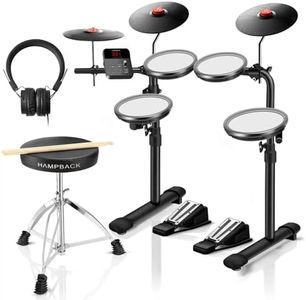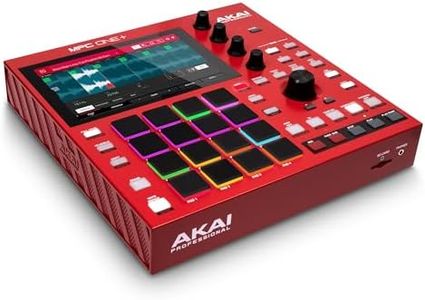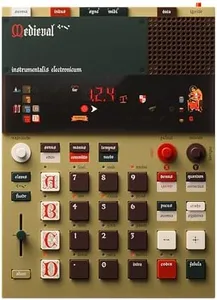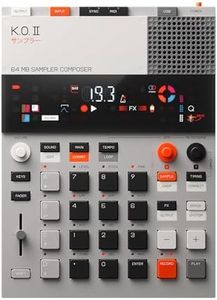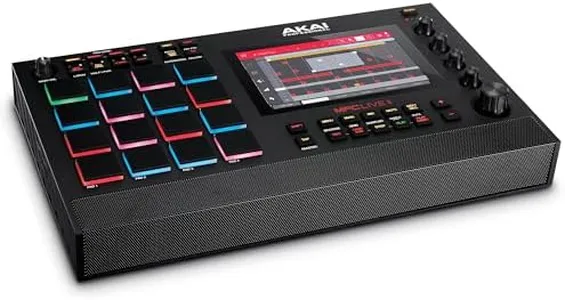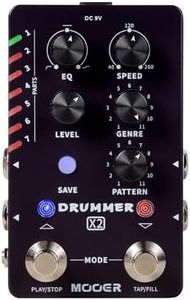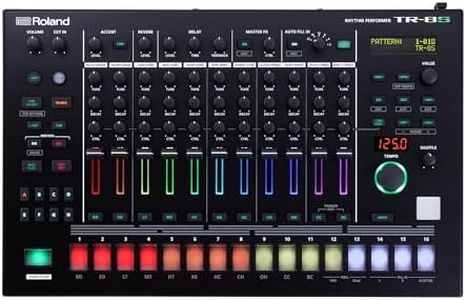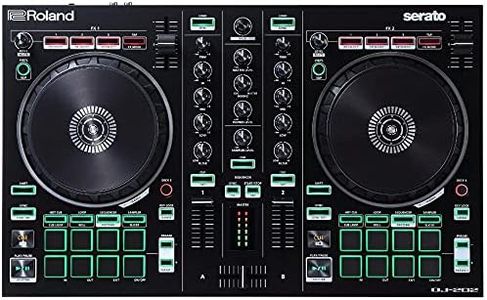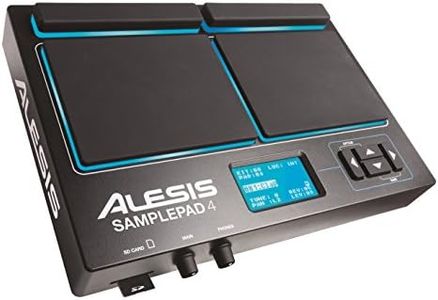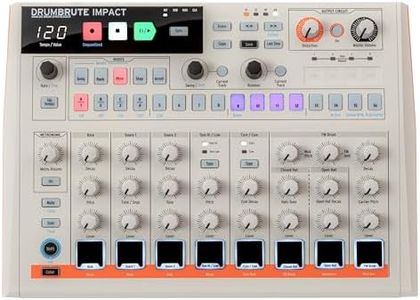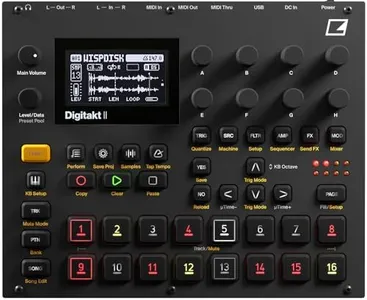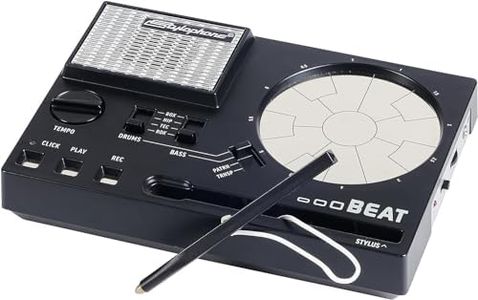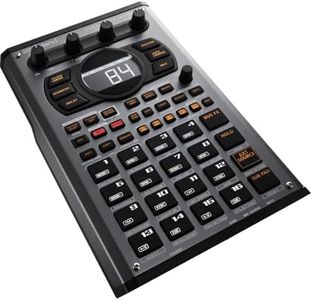10 Best Drum Machines 2025 in the United States
Our technology thoroughly searches through the online shopping world, reviewing hundreds of sites. We then process and analyze this information, updating in real-time to bring you the latest top-rated products. This way, you always get the best and most current options available.

Our Top Picks
Winner
Akai Professional MPC One+ Standalone Drum Machine, Beat Maker and MIDI Controller with WiFi, Bluetooth, Drum Pads, Synth Plug-ins, Touchscreen, and Native Instruments Integration
Most important from
276 reviews
The AKAI Professional MPC One+ is a versatile drum machine and beat maker that can operate independently without a computer, making it highly portable. Its sound quality is impressive, thanks to the custom sample and loop library, along with exclusive standalone synth engines and premium AIR FX for mixing and mastering. With 128 MIDI and 8 audio tracks per project, there's a vast array of sounds at your fingertips, catering to a wide range of musical styles, especially electronic music.
The 16 velocity-sensitive RGB pads and the 7-inch multi-gesture touchscreen provide an intuitive user interface, making it easy to create and tweak beats. The touch capacitive Q Link knobs and dedicated encoder knob further enhance the hands-on experience. Connectivity options are robust, featuring MIDI In & Out, multiple TRS audio and CV/Gate jacks, USB ports, and built-in WiFi and Bluetooth. These allow seamless integration with other devices and easy access to online libraries like Splice, as well as compatibility with software like Ableton Link 3 and MPC2.
The unit's compact size and light weight (4.4 pounds) make it a good choice for producers on the go. However, the 2GB RAM and 16GB internal storage might be limiting for more extensive projects, although the SD card slot offers some expansion. Some users may find the absence of a built-in battery a downside, as it requires a power source. Despite these minor drawbacks, the MPC One+ stands out as a powerful, user-friendly tool for both new and experienced beat makers and producers.
Most important from
276 reviews
Teenage Engineering EP-1320 Medieval Sampler, Drum Machine and Sequencer with Built-in Microphone and Effects
Most important from
20 reviews
The Teenage Engineering EP-1320 Medieval Sampler offers a unique twist for drum machine enthusiasts by immersing users in a medieval soundscape. It boasts a curated library of hundreds of medieval sounds and samples recorded by real artists using authentic instruments, making the sound quality quite impressive and distinct. Sampling is straightforward with options to record via the built-in microphone or line-in, allowing users to add personal touches to their compositions.
The device is also built for live performances, with stereo effects and punch-in effects easily accessible through the multifunctional fader, enhancing usability on stage. Sequencing capabilities are solid, featuring a four-track sequencer with 6 stereo voices or 12 mono, ample memory, and numerous sample slots, facilitating complex and varied musical creations. Connectivity is robust with sync in/out and MIDI in/out options, ensuring smooth integration with other instruments and equipment.
Portability is another highlight, given its compact dimensions and lightweight design, making it easy to carry around. However, the plastic material might not appeal to everyone, potentially raising concerns about durability. Also, while the user interface promises multifunctionality, newcomers might require some time to get accustomed to its features. This drum machine is particularly suited for artists interested in blending traditional medieval sounds with modern electronic music, providing a distinctive niche experience.
Most important from
20 reviews
teenage engineering EP–133 K.O. II sampler, drum machine and sequencer with built-in microphone and effects
Most important from
251 reviews
The teenage engineering EP–133 K.O. II sampler, drum machine, and sequencer packs a lot into a compact device. It offers impressive sound quality and a wide variety of pre-loaded drums, bass, and keys. The built-in microphone and line-in capability for sampling provide flexibility in capturing sounds from various sources. With 999 sample slots and 64 MB memory, you have ample space for creativity.
The high-resolution sequencer with 4 groups and 12 patterns per group makes it easy to build and experiment with beats and bass lines. The workflow is designed for speed, allowing for quick transitions from idea to track. The punch-in 2.0 effects and multiple stereo effects add depth and variety to your music. Connectivity is well-covered with line-in, line-out, and USB-C options.
The device is also highly portable, running on 4 AAA batteries or via USB-C, and is small enough to take anywhere. The user interface is intuitive, combining vintage-style keys with modern touch and pressure sensitivity, making it accessible for live performances and tweaking on the fly. However, the plastic build may not appeal to everyone looking for a more rugged device. The small size might also mean it’s not the best option for those with larger hands or who prefer more spacious controls. The battery life, reliant on AAA batteries, can be a bit limiting if you don't have access to a USB-C power source. Despite these minor drawbacks, the EP–133 K.O. II is a powerful, versatile, and portable drum machine that suits both beginners and experienced musicians looking for a compact, feature-rich device.
Most important from
251 reviews
Buying Guide for the Best Drum Machines
Choosing the right drum machine can significantly enhance your music production experience. Drum machines are electronic instruments designed to imitate the sound of drums, cymbals, and other percussion instruments. They are widely used in various music genres, from electronic dance music to hip-hop and rock. When selecting a drum machine, it's essential to consider several key specifications to ensure it meets your needs and preferences. Understanding these specs will help you make an informed decision and find the best fit for your musical style and workflow.FAQ
Most Popular Categories Right Now
